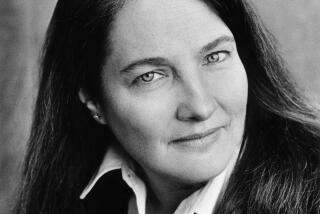Michael S. Reynolds; Wrote Five-Volume Biography of Novelist Ernest Hemingway
- Share via
Michael S. Reynolds, who wrote memorably about the life, as opposed to the literature, spun out by legendary novelist Ernest Hemingway, has died at age 63.
Reynolds, author of a critically acclaimed five-volume biography of Hemingway, died Saturday of pancreatic cancer at his home in Santa Fe, N.M.
Altogether, Reynolds wrote 10 books on Hemingway, who became his life work after he discovered “Papa’s” books as an undergraduate at Rice University in the late 1950s. The biographer’s original intent was to write, perhaps to write like Hemingway, not specifically to write about Hemingway.
But after Reynolds had read everything Hemingway had written, and tried to mimic the spare style, he started having questions. Such as, how did Hemingway write so graphically about the Italians’ retreat from Caporetto in “A Farewell to Arms” when he had arrived in Italy eight months after the legendary battle.
Answering that question resulted in Reynolds’ doctoral thesis at Duke University and eventually his first book, “Hemingway’s First War,” which was published in 1976. What Reynolds showed was that Hemingway, whom everyone had assumed was merely recording eyewitness accounts, actually had done meticulous research in newspaper clippings and other sources before writing his fiction.
“The mystique that Hemingway had created was that he wasn’t an intellectual, he didn’t read books, that he always wrote about his own life, and that the main character was a thinly veiled version of himself,” Reynolds told the Raleigh, N.C., News and Observer in 1997 at the time of his retirement from teaching at North Carolina State University. “But that actually wasn’t the case.”
Reynolds’ five-volume Hemingway biography comprises “The Young Hemingway,” in 1987; “Hemingway: The Paris Years,” in 1989; “Hemingway: The American Homecoming,” in 1992; “Hemingway: The 1930s,” in 1997; and “Hemingway: The Final Years,” in 1999.
Born in Kansas City, Mo., with degrees from Rice, the University of North Carolina and Duke, and a developing reputation as an expert on both Hemingway and biography in general, Reynolds had many opportunities to move to larger campuses. But he stuck with the state university in Raleigh, which had hired him before his reputation was established, for 32 years, and became a much-loved, down-to-earth English teacher known for treating his students as his equals.
“There are a lot of things that hold you that have nothing to do with money,” he said when he retired. “N.C. State has been very good to me--they have rewarded me for doing what I would have done, even if they hadn’t.”
Praised for his careful research of books, inventories of Hemingway’s various homes, letters, even the novelist’s library cards, and his interviews with those who had known Hemingway, Reynolds was also credited with writing--and teaching the writing of--biographies to tell a story rather than to recite facts.
“All writing is fiction--history, biography, the novel--all fiction, all imaginary order,” he was fond of saying, in espousing the need to tell a readable story.
As part of Reynolds’ lifelong research, aided by his wife and editor Ann, he followed Hemingway’s travels through Spain, France, Switzerland, Austria, Italy and Key West, Fla., and visited the novelist’s childhood home in Oak Park, Ill.
Reynolds served on the editorial board of the Hemingway Review. He also helped establish the Hemingway Society, which presents the annual Ernest Hemingway Foundation Award for the best first work of fiction published in the U.S., and organized its biannual conferences for Hemingway scholars. The professor was particularly delighted with the 1996 conference in Sun Valley, Idaho, one of Hemingway’s familiar stomping grounds, which was attended by five friends of the late author.
Internationally respected, Reynolds was consulted in 1992 about 20 newly discovered newspaper stories allegedly written by Hemingway for the Toronto Star in the early 1920s. Some of the articles, which Reynolds and other scholars authenticated, were found in the Hemingway section of the John F. Kennedy Library in Boston, the world’s leading center of Hemingway studies.
“Anything that he was writing in the early period when he was learning his art--and the Toronto pieces are crucial to that--is helpful to us,” Reynolds told news media at the time. “This is a major find.”
Reynolds had long known that Hemingway used characters, settings or events from real life in subsequent fictional stories. As one example taken from that Canadian newspaper trove, Reynolds said, Hemingway wrote a story for the Star about a man named Red Ryan who escaped from a Canadian prison. Later, Reynolds said, Hemingway made notes for a projected novel about a convict named Red Ryan, although the novel was apparently never written.
The biographer resigned as president of the Hemingway Society in July because of failing health, noting in a letter to society officials: “As Ernest told us a long time ago, follow any life far enough and it will end badly.”
In addition to his wife of 40 years, the former Ann Eubanks, Reynolds is survived by two daughters, Dierdre Shipman and Shauna Reynolds; a brother, John; a sister, Mary Hamlin; and two grandchildren.
More to Read
Sign up for our Book Club newsletter
Get the latest news, events and more from the Los Angeles Times Book Club, and help us get L.A. reading and talking.
You may occasionally receive promotional content from the Los Angeles Times.









